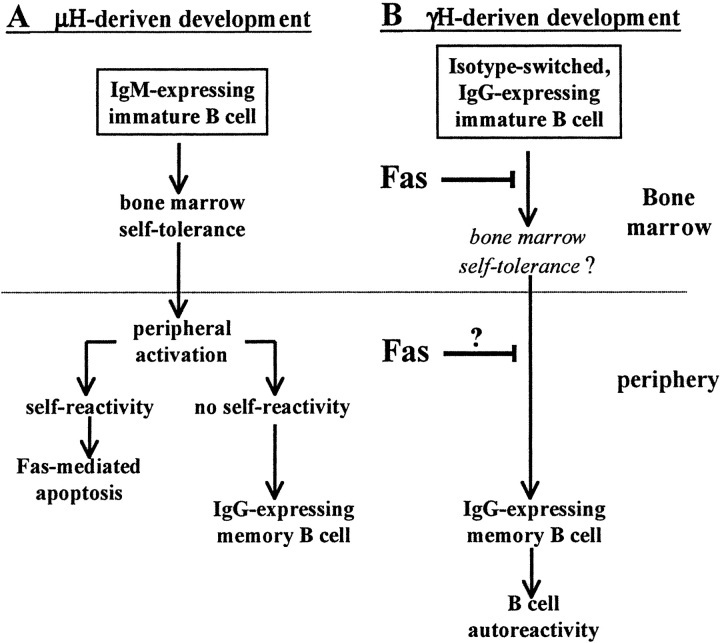Figure 8.
Suggested models for alternative developmental pathways driven by different Ig heavy chain isotypes. The prevailing view of B cell development is shown in A. Most of B cell development is driven by μH chain, and IgM-expressing immature B cells are subjected to self-tolerance in the BM. Mature peripheral B cells express IgM and IgD and become activated upon encountering antigen. Published data suggest that peripheral activation is an important checkpoint to extinguish self-reactivity, mediated by lack of T cell help. In contrast, appropriate T cell help (such as CD40L expression) promotes high affinity, nonself– B cells to develop in the germinal center and undergo isotype switching and differentiate into the memory compartment. The alternative developmental pathway of isotype-switched B cell precursors is shown in B. According to this model, IgG receptor drives IgG-expressing B cells directly into the memory compartment. Because such development circumvents the requirement for peripheral activation, it may confer severe autoimmune risk. In the normal (non-lpr) mouse, such cells are negatively selected by the Fas pathway to prevent their development into the memory compartment and participation in an autoimmune response. Thus, the Fas/FasL pathway is a fail-safe mechanism for elimination of isotype-switched B cell precursors and has a major role in controlling autoimmunity during BM development.

